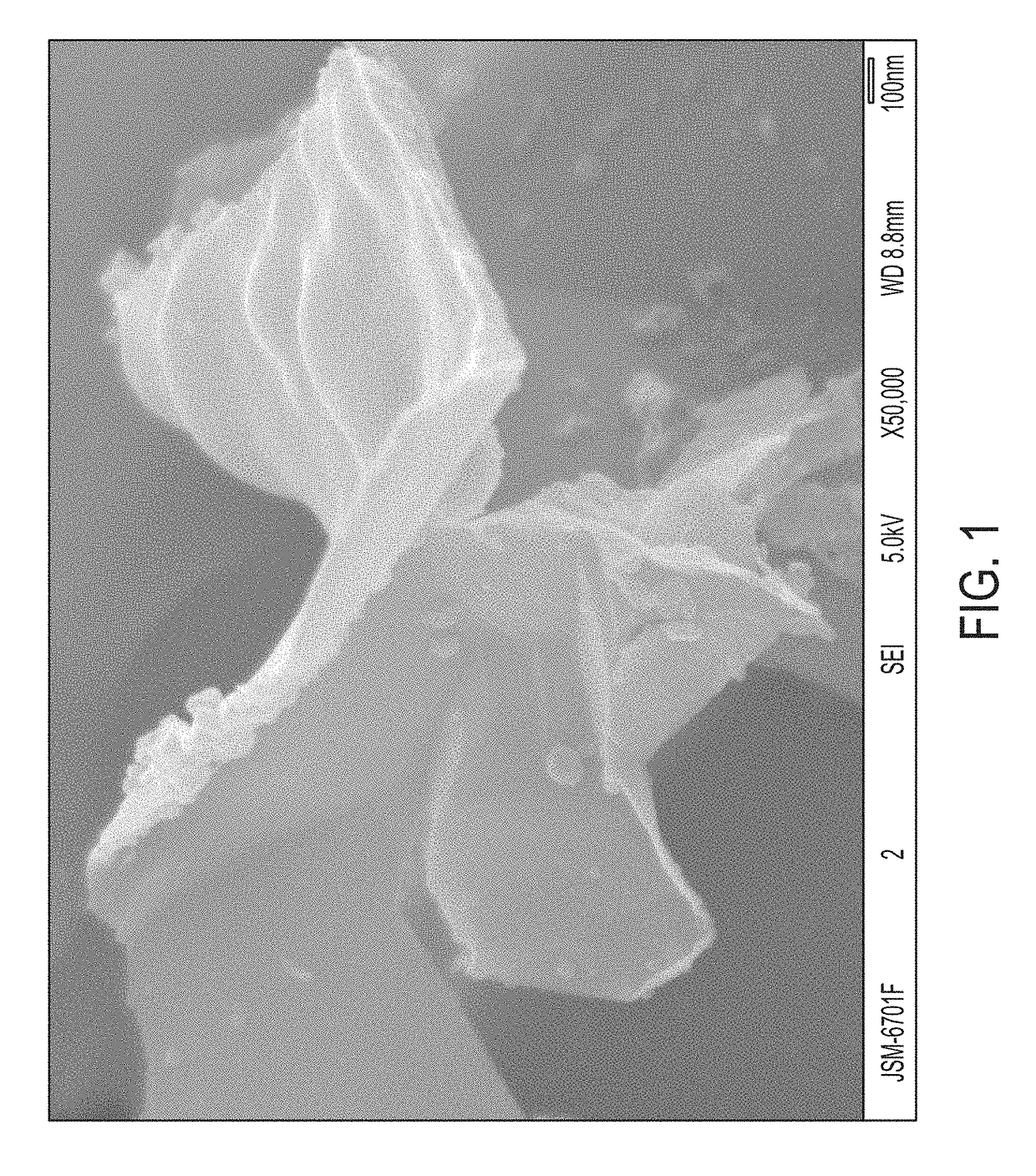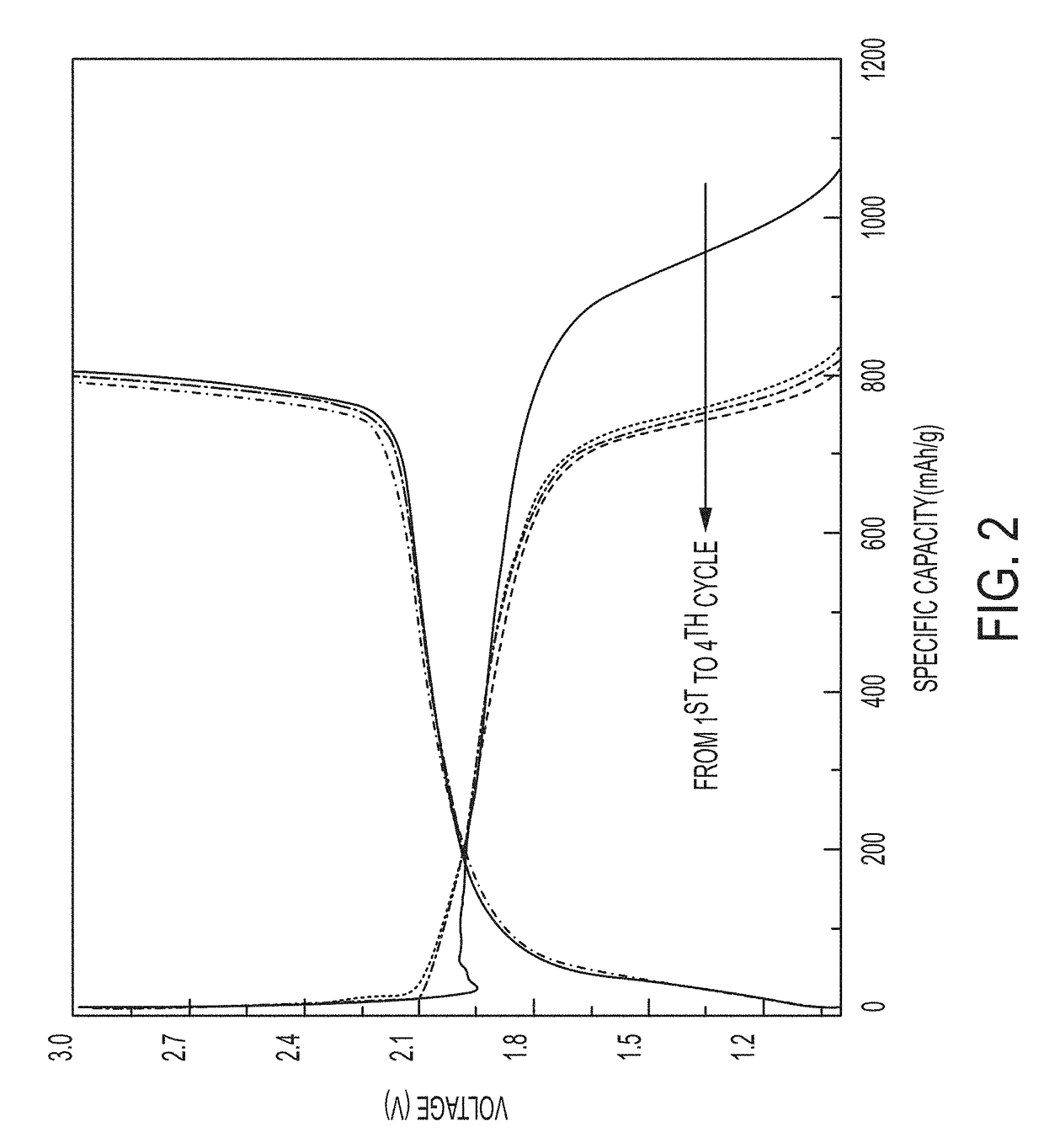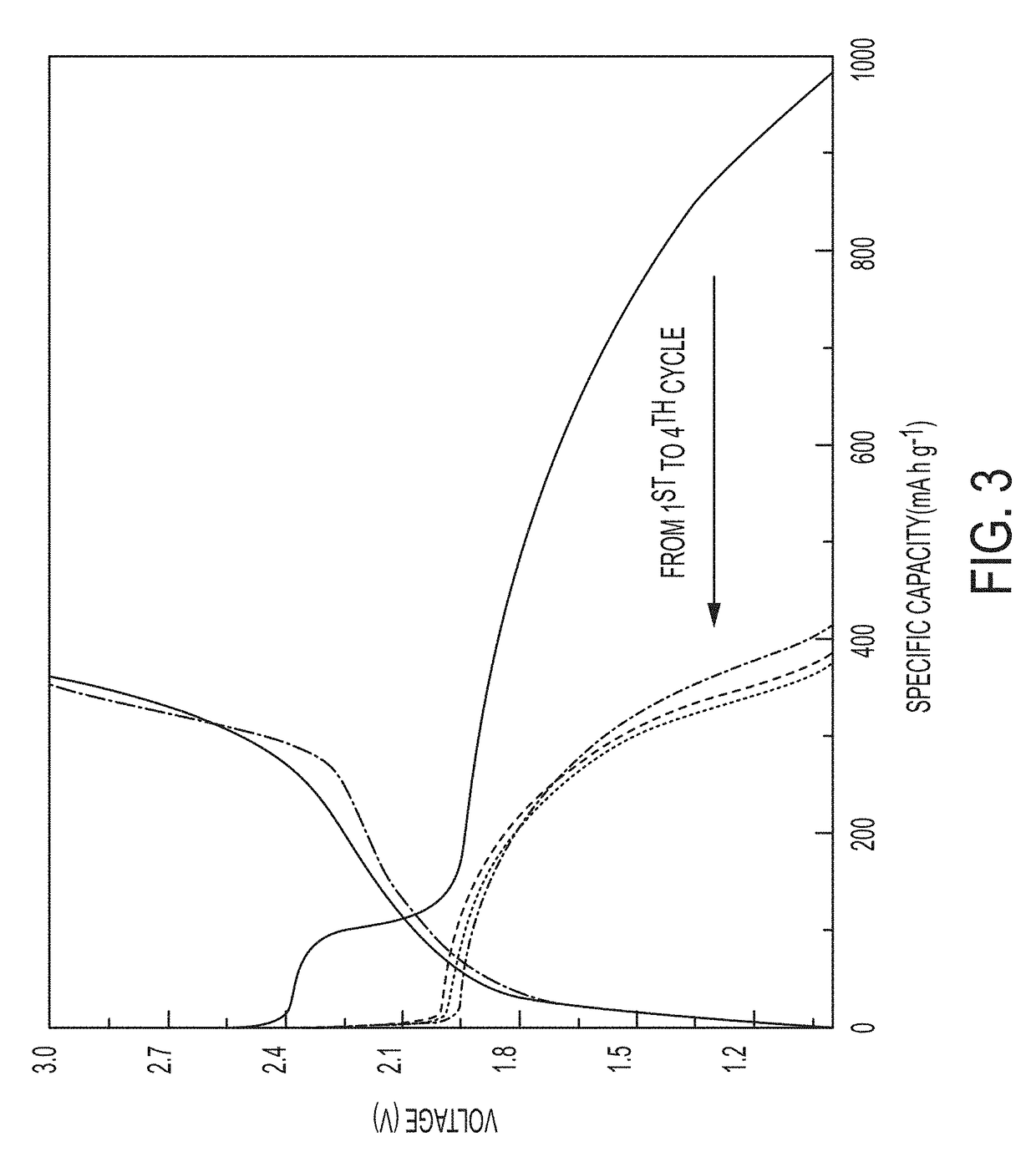Immobilized Selenium, a Method of Making, and Uses of Immobilized Selenium in a Rechargeable Battery
a technology of immobilized selenium and rechargeable batteries, which is applied in the field of lithium secondary batteries, can solve the problems of complex procedures for preparing graphene oxide raw materials used in this process, inconvenient industrial production, and subsequent capacity decay, and achieves stable electrochemical performance, high degree of graphitization, and high energy density
- Summary
- Abstract
- Description
- Claims
- Application Information
AI Technical Summary
Benefits of technology
Problems solved by technology
Method used
Image
Examples
example 1
[0053](A) Preparation of Selenium Carbon Composite Material
[0054]After grinding and milling, an appropriate amount of potassium citrate is calcined at 800° C. for 5 hours under an inert atmosphere, and cooled to room temperature. Washed with dilute hydrochloric acid to a neutral pH; filtered and dried to give a two-dimensional carbon nanomaterial (FIG. 1); according to the mass ratio of 50:50, weigh the two dimensional carbon material and selenium, and then stir and mix with the ethanol solution of selenium uniformly; after solvent evaporation, dry the mixture in dry oven; the dried mixture was heated at 5° C. / min to 240° C. and soaked for 3 hours; then continues to heat up at 5° C. / min to 450° C.; soaked for 20 hours; cooled to room temperature, which resulted in the selenium carbon composite material.
[0055](B) Preparation of the Selenium Carbon Composite Cathode
[0056]The above-prepared selenium carbon composites are mixed with carbon black Super P (TIMCAL) and binder CMC / SBR (weig...
example 2
[0061]Conditions are the same as in Example 1, with the exception that the raw material carbonized for two-dimensional carbon is sodium citrate. Battery test results are summarized in Table 1 below.
example 3
[0062]Conditions are the same as in Example 1, with the exception that the raw material carbonized for two-dimensional carbon is potassium gluconate. Battery test results are summarized in Table 1 below.
PUM
 Login to View More
Login to View More Abstract
Description
Claims
Application Information
 Login to View More
Login to View More - R&D
- Intellectual Property
- Life Sciences
- Materials
- Tech Scout
- Unparalleled Data Quality
- Higher Quality Content
- 60% Fewer Hallucinations
Browse by: Latest US Patents, China's latest patents, Technical Efficacy Thesaurus, Application Domain, Technology Topic, Popular Technical Reports.
© 2025 PatSnap. All rights reserved.Legal|Privacy policy|Modern Slavery Act Transparency Statement|Sitemap|About US| Contact US: help@patsnap.com



